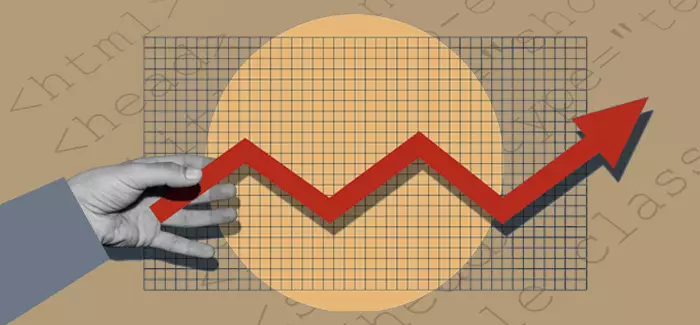What is a product manager?

Written by Dillon Price

Reviewed by¬ÝKathryn Uhles, MIS, MSP,¬ÝDean, College of Business and IT

What is a product manager’s role exactly? In a nutshell, they serve as the driving force behind a product’s journey from concept to completion. In large corporations, product managers collaborate with researchers, analysts, marketers, developers and designers to develop, test and execute new products. Let’s look more closely into what a product manager does.
What is a product manager’s role
To look at what a product manager’s role is, first look at the type of organization they serve. In a large organization, product managers ensure stakeholders align with the product vision. In smaller organizations, they typically focus on defining and executing the vision without stakeholder approval.
While a product manager’s role may differ from one organization to the next, their general responsibilities may include:
- Understanding the needs of consumers and obtaining feedback
- Conducting market research and identifying competitors
- Developing and defining a clear product vision
- Determining a product’s features and functionality
- Fostering collaboration and team autonomy
- Identifying stakeholders
- Defining and tracking metrics to measure product success
The importance of product managers in organizations
In organizations, product managers ensure that goods align with customer needs and market trends. They connect departments and facilitate communication and collaboration to achieve desired outcomes.
They also create product road maps, analyze customer feedback and develop features that resonate with consumers. Additionally, in a fast-paced SaaS environment, product managers keep teams focused on delivering value and adapting to customer needs.
Challenges in product management
Product managers may encounter several challenges over the course of an item’s production journey. One major challenge is overcoming communication silos that separate teams and create a divide that delays deadlines and compromises product cohesion.
Additionally, ensuring user adoption and creating seamless onboarding experiences are important aspects of product management. When onboarding becomes an afterthought, users lose interest and churn rates increase.
On top of that, unclear product road maps and mistakes can derail projects and cause teams to miss deadlines.
Lastly, without insight from user feedback and analytics, product managers risk making decisions based on assumptions rather than consumer needs. As a result, a product may miss its mark or fail to meet user expectations.
What are a product manager’s skills and qualifications?
Employers who hire product managers may prefer candidates who have at least an undergraduate degree in engineering, business, marketing, IT or a similar field. Having a master’s in business administration (MBA) can also prepare candidates with skills that may make them more appealing to potential employers.
A college education, however, only provides the skills necessary to get started. Helpful skills also include a blend of technical, business and interpersonal skills. Additionally, you must develop an understanding of user experience, product development and key performance indicators.
Technical skills¬Ý
As a product manager, you should possess technical skills that enable you to bridge the gap between development teams and business objectives effectively. For example, depending on the product, you may need to understand coding fundamentals (e.g., HTML, CSS or SQL) to communicate with developers and understand what goes into building a product.
You should also be familiar with software or product analytics platforms that allow you to analyze data and make informed decisions throughout a product’s life cycle.
Additionally, if you are a specialist in this area, you may need to know how to create and test prototypes with computer-aided design tools and refine product features based on real user feedback.
You also want to be aware of UX aspects of project management. UX means “user experience.” It’s important to get feedback about your product or services from users to ensure user adoption and customer satisfaction.
Lastly, consider delving into project management software and learn how to track productivity and meet product deadlines.
General business expertise and understanding¬Ý
Project management, not to be confused with product management, requires a comprehensive understanding of business operations to effectively align specific project outcomes with organizational goals. This includes the ability to analyze financial metrics such as revenue, profit margins and customer lifetime value.
Having excellent research skills also allows you to identify market opportunities and assess potential risks. Additionally, you should understand resource management to balance budgets and allocate time effectively.
Communication and leadership abilities
Product managers need exceptional communication and leadership skills to effectively guide teams and deliver their products. You must articulate a clear product vision and strategy that aligns with business goals while inspiring team members and stakeholders to collaborate toward shared objectives.
Active listening is equally important to understand feedback, resolve concerns and establish trust across all levels of an organization. Storytelling skills can also help you present ideas persuasively and make complex concepts accessible and engaging for diverse audiences.
What is a product manager’s typical career path?
Product managers may start in junior roles where they focus on small product features and work under a senior product manager. Once they have enough experience, they may want to pursue higher roles such as product owner, senior product manager, product director, product lead, head of product or chief product officer if they are skilled enough in their field.
If you’re interested in becoming a project manager, there’s good news. The same product management skills you possess (e.g., problem-solving, analytical and critical-thinking skills) can transfer to a project manager role. However, you may need to pursue additional college education or complete a certificate program in business, project management or a similar field to advance into this role depending on specific organization requirements for their open positions.
Who hires product managers?
Any industry that drives innovation and solves complex problems relies on product managers. For example, Internet of Things needs them to enhance user experience and security. Another example might be a newspaper that needs to offer a digital version.
Additionally, hire product managers to bridge the gap between technical teams and market needs. This includes everything from small software startups to major corporations.
What do product managers do to advance their skills?
If you’re looking to advance your product management skills and you’re looking to work in a role for a larger organization, consider becoming a Scrum master. Becoming a Scrum master means mastering Agile methodology to foster collaboration and ensure efficient development both within and across teams. These skills could be helpful if your role requires you to manage multiple teams to get a product to market.
Scrum masters support product owners in backlog management and assist product managers by removing obstacles, improving product quality and accelerating delivery. Additionally, they facilitate communication and promote a culture of continuous improvement within teams.
Related roles to product management
Product managers don’t act alone in the product life cycle. They work alongside product owners and project managers to achieve the best product outcome possible.
What is a product manager’s role compared to a product owner?
The roles of product manager and product owner intersect, especially in Scrum. Product managers focus on the strategic direction through research, vision-setting, stakeholder alignment and prioritization.
Product owners translate this vision into actionable tasks by managing the backlog and working closely with the development team. In Scrum, the product manager leads strategy while the product owner drives tactical execution.
However, other frameworks such as Kanban may merge these responsibilities. For example, both roles may use Kanban to incorporate customer feedback and user stories to improve product features.
Additionally, while both roles involve working with stakeholders, product managers work with outside stakeholders, and product owners work with internal stakeholders.
Product manager vs. project manager roles
Product and project managers are complementary but different. Product managers define a product’s “what” and “why” to ensure alignment with customer needs. Project managers oversee the “how” and “when.”
Together, they engage stakeholders, track progress using shared metrics and work within the Agile project management framework to align the product road map with organizational goals.
Emerging trends and technology shaping product management
Since product management is an ever-evolving field, it requires keeping an ear to the ground for emerging trends and technological advancements.
The rise of Agile and lean technologies (particularly Kanban and Scrum) has helped product managers boost efficiency and adaptability while eliminating waste such as overproduction, waiting and extra processing.
Additionally, market research tools can help product managers understand customer needs and market trends. Competitive analysis, for example, uses market research to analyze competitors’ actions and recommend future strategies.
It doesn’t stop there. With new trends and technologies in the pipeline, working with Agile methodologies and gaining market foresight will ideally become much easier. For example:
- Data analytics will help product managers better understand customer needs and the competition, which can lead to better decision-making.
- Automation will streamline workflows, so product managers can focus on strategy and value creation.
- Product management will require seamless, personalized experiences through deep user research and feedback loops.
- Hybrid Agile frameworks will provide better predictability and flexibility.
What is a product manager’s first step?
To answer ‚ÄúWhat is a product manager?‚Äù is to take the first step in your career in this dynamic field. Begin by building relevant skills and knowledge through the ∆þ…´ ”∆µ‚Äôs online college degrees and certification programs:
- Business degrees: UOPX’s online business degree programs are designed to help you build foundational skills in business administration, management and operations.
- Business certificates: UOPX offers business certificate programs that cover business analytics, operation management and more.
- Undergraduate Operations Management Certificate: Learn key product management skills such as planning, organizing and managing resources and processes.
To take the next step in your career, request more information on UOPX’s degrees and certificates.

ABOUT THE AUTHOR
Dillon Price is a detail-oriented writer with a background in legal and career-focused content. He has written and edited blogs for dozens of law firms, as well as Law.com. Additionally, he wrote numerous career advice articles for Monster.com during the company‚Äôs recent rebranding. Dillon lives in Western Massachusetts and stays in Portugal each summer with his family.¬Ý

ABOUT THE REVIEWER
Currently Dean of the College of Business and Information Technology,¬ÝKathryn Uhles has served ∆þ…´ ”∆µ in a variety of roles since 2006. Prior to joining ∆þ…´ ”∆µ, Kathryn taught fifth grade to underprivileged youth in Phoenix.
This article has been vetted by ∆þ…´ ”∆µ's editorial advisory committee.¬Ý
Read more about our editorial process.


